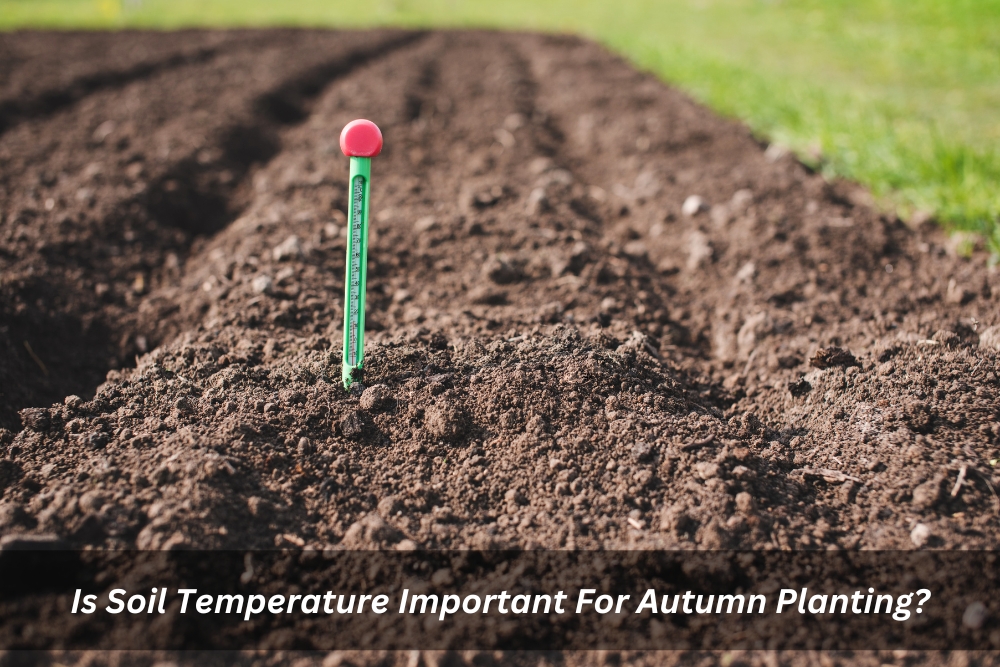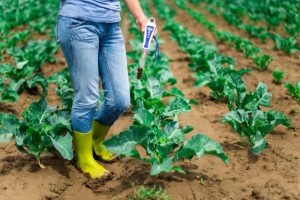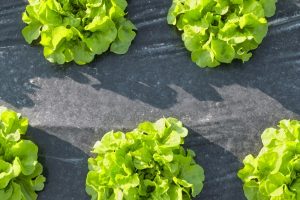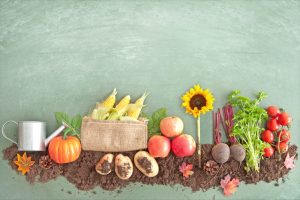As the summer heat subsides and the days grow shorter, autumn presents a delightful opportunity to extend your veggie patch bounty. But before you grab your trusty trowel and seed packets, there’s one crucial factor to consider: soil temperature. While sunshine and rainfall are vital for a flourishing garden, the unseen warmth of the soil plays a significant role in seed germination and early plant growth. Let’s delve into why soil temperature matters for autumn planting and equip you with the knowledge to make informed decisions for a thriving fall harvest.
Why does soil temperature matter for autumn planting?
Imagine a tiny seed nestled within the cool earth. To awaken from its slumber and sprout into a vibrant plant, it needs the right triggers. Soil temperature acts as a vital cue, influencing several key processes:
- Seed dormancy: Many vegetables have built-in dormancy mechanisms, requiring specific temperature ranges to break free. Warmer soil temperatures signal the seed that favourable conditions exist for germination.
- Root development: Strong, healthy roots are essential for water and nutrient uptake. Cool soil can hinder root growth, leaving seedlings vulnerable to stress and disease. Warm soil encourages robust root development, providing a solid foundation for plant growth.
- Nutrient and water uptake: Chemical reactions within the soil are temperature-dependent. Warmer soil allows for better nutrient availability and easier water absorption by plant roots, promoting healthy growth.
Understanding how soil temperature affects these fundamental processes will empower you to optimise your autumn planting for success.
When should you check your soil temperature?
Knowing the ideal soil temperature for your chosen vegetables is crucial. Here’s how to time your planting perfectly:
- Research: Different vegetable types have specific temperature preferences for germination. Research the optimal soil temperature range for the vegetables you plan to plant.
- Weather patterns: Autumn weather can be unpredictable. Consider how recent weather patterns might have impacted soil temperature. A string of cool days can leave the soil colder than usual, while warm sunny days can accelerate soil warming.
- Measuring soil temperature: Invest in a soil thermometer – a valuable tool for any gardener. Simply insert the probe several inches deep into the soil to get an accurate reading. Aim to measure the temperature at the depth where you’ll be planting your seeds.
A quick and dirty trick for experienced gardeners is to stick your bare hand a few inches into the soil. If it feels cool and uncomfortable, it’s likely too cold for optimal seed germination.
How can you warm up cool soil for fall planting?
If your soil temperature falls short of the ideal range, fret not! Here are a few techniques to warm things up:
- Black plastic mulch: Black plastic mulch is your friend. It absorbs sunlight and radiates heat back into the soil, accelerating the warming process. Lay down black plastic mulch a couple of weeks before planting to give the soil a chance to heat up.
- Raised beds: Raised beds tend to warm up faster than in-ground soil due to their improved drainage and exposure to sunlight. Consider building raised beds if you frequently struggle with cool autumn soil.
- Row covers: Row covers made of fabric or plastic trap heat around germinating seeds. This technique can create a mini-greenhouse effect, boosting soil temperature and protecting seedlings from unexpected cold snaps.
By employing these methods, you can create a more favourable environment for your autumn seeds to germinate and thrive.
What vegetables thrive in cool soil temperatures?
Not all vegetables are sunshine seekers! Here’s a list of cool-season champions that germinate and grow well in cooler autumn soil:
- Leafy greens: Lettuce, spinach, kale, and Asian greens all flourish in cooler temperatures. You can enjoy fresh salads well into winter with autumn plantings.
- Root vegetables: Beets, carrots, radishes, and turnips germinate readily in cool soil.
- Brassicas: Broccoli, cauliflower, cabbage, and Brussels sprouts are cool-season vegetables that benefit from autumn planting.
When planning your autumn veggie patch, consider these cool-season options that are well-suited for the cooler autumn soil temperatures.
Can you still plant if your soil temperature is low?
Don’t despair if your soil temperature isn’t quite where it needs to be. Here are some alternative strategies to ensure a successful autumn harvest:
- Start seeds indoors: For vegetables with longer germination times, consider starting seeds indoors on a sunny windowsill. Once the seedlings are established and the soil temperature warms up, you can transplant them outdoors.
- Frost protection: Techniques like row covers and cold frames can extend your growing season by protecting young plants from unexpected frosts.
- Planting strategies: Consider planting cool-season vegetables in succession throughout autumn to maximise your harvest window.
With a little planning and adaptation, you can still achieve a bountiful autumn harvest even if your soil temperature is a little on the cool side.
Conclusion: Planning your successful autumn planting
Now that you’re armed with the knowledge of how soil temperature impacts autumn planting, you can confidently plan your veggie patch for a successful harvest. Remember these key takeaways:
- Soil temperature plays a vital role in seed germination and early plant growth. Warmer soil encourages these processes, leading to healthy seedlings.
- Research the ideal soil temperature for your chosen vegetables and check your soil temperature before planting. This will help you determine if you need to take any steps to warm the soil.
- Several techniques can help warm cool soil for autumn planting, including black plastic mulch, raised beds, and row covers.
- Many vegetables, such as leafy greens, root vegetables, and brassicas, thrive in cooler soil temperatures. Consider these options for your autumn veggie patch.
- Don’t be discouraged by less-than-ideal soil temperatures. Starting seeds indoors, using frost protection, and adapting your planting strategies can still lead to a bountiful harvest.
Ready to get your hands dirty and create a thriving autumn veggie patch? At A1 Gardening & Landscaping Sydney Sydney, we’re passionate about helping you achieve gardening success. We have a wealth of knowledge on autumn planting and can provide you with personalised advice to ensure your fall harvest flourishes. Contact us today and chat with our friendly staff who are experts in all things autumn planting. Let’s make your autumn garden dreams a reality!




